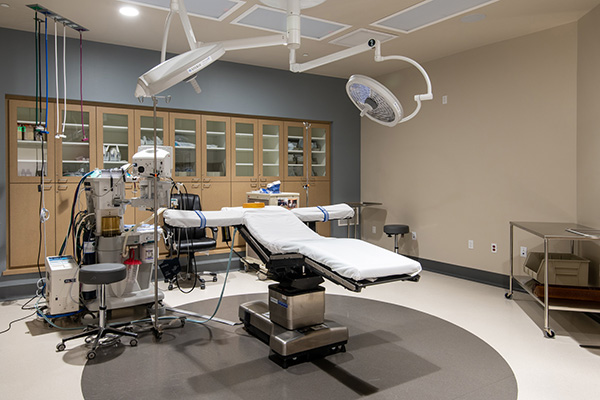Introduction
In today's world, cosmetic treatments have actually ended up being increasingly popular, with breast augmentation standing out as one of the most desired improvements. Whether it's for visual appeal or reconstructive purposes, implants play a significant role in accomplishing wanted body shapes and sizes. However, in addition to the benefits come different risks associated with different types of implants. This detailed post will look into these threats, offering insights that can assist possible candidates make informed decisions.
Understanding the Threats Connected with Different Types of Implants
When thinking about breast enhancement surgical treatment, it's crucial to comprehend that every kind of implant-- be it silicone, saline, or fat transfer-- brings its own set of dangers. These can vary from small problems to major health concerns. Being well-informed is essential to browsing your choices effectively.
Types of Breast Implants
1. Silicone Implants
Silicone implants are filled with a cohesive gel that imitates the feel of natural breast tissue. They're known for their natural appearance and softness.
Risks:
- Rupture: If a silicone implant leakages, the gel might stay within the breast tissue or escape into surrounding areas. Capsular Contracture: This occurs when scar tissue forms securely around the implant, leading to discomfort and distortion. Additional surgical treatments might be required for replacement or removal.
2. Saline Implants
Saline implants are filled with sterile saltwater. They are typically inserted empty and filled as soon as in place.
Risks:

- Deflation: A saline implant can deflate if there's a rupture, leading to visible changes in breast size. Infection: Just like any surgery, there's a threat of infection post-operation. Rippling: Some patients may experience visible ripples on the surface of saline implants.
3. Fat Transfer Breast Augmentation
This approach includes moving fat from other locations of the body into the breasts.
Risks:
- Absorption: The body can soak up a few of the moved fat over time, possibly leading to unevenness. Complications at Harvest Sites: Locations where fat is gathered may experience bruising or infection. Unpredictable Results: Results can differ greatly depending on how much fat makes it through after transfer.
Evaluating Your Options
When looking for " breast enhancement near me" or " breast augmentation surgery near me," think about asking about each type's particular threats and benefits during your consultations. Understanding these factors will empower you to make an educated choice concerning your body and health.
The Value of Preoperative Assessments
Before going through any type of breast enhancement, it's vital to go through extensive preoperative assessments. These examinations assist recognize potential danger factors specific to each patient and produce a tailored technique for surgery.
Medical History Review
A detailed case history review consists of understanding previous surgeries, present medications, allergic reactions, and total health status. This information is important for reducing risks connected with anesthesia and recovery.
Physical Examination
A physical examination enables cosmetic surgeons to assess breast tissue quality and determine which kind of implant may yield ideal results while attending to any status quo that could make complex surgery.
Common Dangers Related to Breast Augmentation Procedures
While private experiences may vary significantly based upon individual health and particular situations, a number of common risks apply throughout all types of breast augmentations:
1. Anesthesia Risks
Anesthesia is typically needed throughout breast augmentation surgeries. Potential issues consist of allergic reactions or respiratory issues occurring from anesthesia administration.
2. Infection Post-Surgery
Infection remains a risk after any surgery. Indications include fever, increased pain at the cut site, discharge from incisions or swelling that does not go away over time.
3. Scarring from Incisions
Every surgical strategy leaves some degree of scarring; nevertheless, how well incisions heal can differ by private skin type and care post-operation.
4. Changes in Sensation
Patients might experience changes in nipple sensation following surgery-- some ladies report heightened sensitivity while others might discover numbness or reduced sensation altogether.

Long-Term Factors to consider After Implant Surgery
Being familiar with long-term factors to consider assists clients prepare adequately for life after undergoing breast enhancement treatments:
Regular Monitoring Required for Implants
Implants aren't lifetime gadgets; routine check-ups (typically every 1-2 years) are important for monitoring their condition and ensuring no problems emerge over time.
Table: Recommended Monitoring Schedule
|Amount of time|Action|| --------------------------------|-------------------------------------------|| 1 Year|Initial follow-up assessment|| Every 2 Years|Routine physical examinations|| As Needed|Imaging (e.g., MRI) if rupture presumed|
Maintaining Communication with Your Surgeon
Staying gotten in touch with your surgeon ensures you have assistance if issues occur post-operation-- whether they be visual problems or health-related questions about your implants' performance.
Addressing Mental Effect Following Surgery
Breast enhancement goes beyond physical modifications; it also impacts mental wellness:
Body Image & Self-Esteem Influences
Many females report enhanced self-confidence after effective breast enhancement surgical treatments; however, expectations need to line up realistically with results to prevent discontentment afterward.
Support Systems Matter Post-Surgery
Building a strong assistance network-- consisting of good friends who've undergone similar treatments-- can supply peace of mind while navigating psychological shifts associated with body image modifications post-surgery.

FAQs About Risks Connected with Breast Augmentation
1. What are common complications following breast augmentation?
Common problems consist of infection, capsular contracture (scar tissue formation), anesthesia reactions, asymmetry in between breasts due to differing recovery rates amongst individuals-- and ruptures depending upon implant type picked (silicone vs saline).
2. How frequently must I get my implants checked?
It's suggested to have regular check-ups every 1-2 years following surgical treatment; this helps make sure whatever remains intact without concerns establishing undetected over time!
3. Can I still breastfeed after getting implants?
Most ladies effectively breastfeed post-surgery; nevertheless-- it's important to discuss this concern in advance given that cut placement might possibly impact milk ducts depending upon surgical techniques used during implantation processes!
4. Exist alternatives besides standard implants?
Yes! Fat transfer techniques provide an alternative path allowing natural tissues from one location (like thighs) injected into breasts-- but bear in mind-- as formerly kept in mind-- the absorption rate differs & & results might not ensure substantial size increases compared against traditional implant options!
5. What happens if my silicone implant leaks?
If you presume leakage-- instant medical attention is required! While some leakage might stay consisted of within surrounding tissues-- prompt action avoids further issues down the line!
6. Is there an age limit for receiving breast augmentations?
Typically people should be at least eighteen years of ages before going through optional surgical treatments like augmentations; certain conditions may require greater age limits especially worrying breast implant which BlackHawk Plastic Surgery generally need patients being twenty-two years of ages minimum under FDA regulations!
Conclusion
Understanding the risks related to different types of implants is important before proceeding with any type of breast enhancement surgical treatment-- be it silicone or saline alternatives in addition to fat transfer methods-- possible candidates need to notify themselves properly through consultations talking about numerous elements including preoperative examinations completely assessing private requirements better preparing them toward making informed decisions eventually enhancing complete satisfaction levels long-lasting! Constantly bear in mind that personal health comes first; prioritize safety along with desired aesthetic appeals throughout this transformative journey ahead!